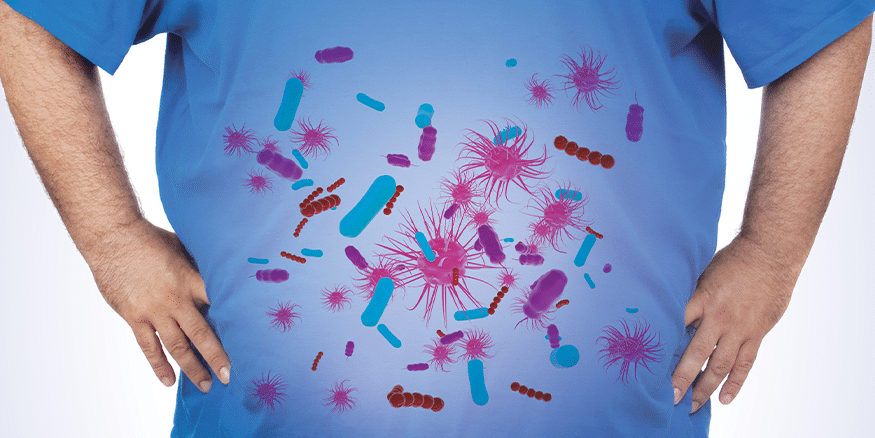Dietitians today are using technology to enhance their practice more than ever before. From simple information-gathering via Internet searches to full-blown marketing campaigns on Facebook, technology is considered critical to the communication process for any business owner and dietitians are no exception. Jumping on the technology and social media bandwagon, there are 64,973 dietitians on LinkedIn, 863 RD bloggers, and The American Academy of Nutrition and Dietetics Twitter accounts have over 73,000 followers.1 Technology definitely has a place in the nutrition industry and the next big thing to consider is the use of apps to provide additional support for the dietitian/client relationship.
There are already quite a few diet and nutrition apps available such as MyFitnessPal and LoseIt! A recent study done in Canada shows that 70% of smartphone users had downloaded apps and that 34% of those apps are health, fitness or wellness-related.2 This forces us to inquire about the usefulness of apps within the dietetic practice. In the same Canadian survey, dietitians were asked about their own app usage and whether they regularly recommend apps for their clients. Interestingly, only about 57% of respondents currently utilize apps in their practice and of the dietitians who do not currently use apps, 86.3% of them are interested in using apps in the future. Overall, among these respondents, the apps being utilized were more for organization than for nutrition or fitness.
Many factors come into play when considering app usage in the field of dietetics and the role they play in client care. Dietitians express concerns about app usage in many areas: 1.) Are apps actually effective in promoting behavior change in clients? 2.) Hospitals often limit or completely prohibit mobile device usage in patient areas. 3.) App usage for older clients might be too difficult. 4.) Existing apps often do not meet the needs of the dietitian or allow them to administer proper client care. 5.) What effect might app usage have on the face-to-face interactions that are so necessary in dietitian/client relationships?3 A potential weakness of the Canadian study is that it did not address app usage among dietetic interns, who are currently using app technology to their benefit. A study done among nursing interns showed that app usage helped students gain confidence in the field by having quick access to clinical/educational information.4 This highlights the importance of having accurate information contained within the app, which unfortunately, may be an area of concern at this point.
Dietitians are asking good questions and concerns are valid. For example, when looking at whether an app can promote behavioral changes in clients, weight management apps are a good example. Studies show mixed results and there is no real proof that nutrition/diet apps really work at all to help promote weight loss.3 However, some very interesting studies have shown that continuous intervention strategies such as text messaging are very effective in helping patients manage chronic conditions.5 A pilot study was done with diabetes patients utilizing text messaging for reminders, education, tips, and encouragement that proved to be extremely helpful in promoting behavior change. Messages like, “Don’t forget corn and potatoes may be vegetables, but they also cause increases in blood sugar levels” were determined to be effective among diabetes patients.5 This proves that technology can be effective if used correctly and within the appropriate population. Perhaps the current weight-management apps just aren’t built correctly. This also takes us back to another question posed by dietitians regarding whether or not apps actually meet the needs of the dietitian in practical application. An app called myPace claims to do just that. The myPace prototype was developed with input from dietitians at all stages of development and claims to “better reflect actual practice and wider dietitian preferences.”3 The myPace app encourages step-by-step changes and face-to-face follow-ups along with evidence-based information and advanced motivational tools. The prototype is going to be extensively tested for efficacy, adherence, and motivation. This could be the first tool of its kind and its development will pave the way for future advancements in these types of apps. It also stresses the importance of dietitian involvement in the development of these apps to make them more practical and effective.
The bottom line is that apps will continue to evolve. However, some measure of trust must be built before these apps will be considered truly useful in practice. It will be critical for dietitians to stay informed about this technology, learn how to best utilize apps in their own practice, and research which apps are proven to provide a benefit. There is no question that apps have a place, it is just a matter of understanding which apps work best and in what situations.
References
1. Cochran, Neva MS, RDN, LD, FAND, King, Debra MS, RDN, LD, FAND.
Dietitians on Social Media: Promoting and Protecting Your Work. Today’s Dietitian. October 2015: 17(10):50.
2. Nundy S, Dick JJ, Goddu AP, et al. Using Mobile Health to Support the Chronic Care Model: Developing an Institutional Initiative. Int J Telemed Appl. 2012;2012:871925. doi:10.1155/2012/871925.
3. Lieffers JRL, Vance VA, Hanning RM. Use of mobile device applications: in Canadian dietetic practice. Can J Diet Pract Res. 2014;75:41+. http://go.galegroup.com.ezproxy.emich.edu/ps/i.do?id=GALE%7CA362727958&v=2.1&u=lom_emichu&it=r&p=HRCA&sw=w&asid=ee65759abb3940b59d8da5327219aa75.
4. Wittmann-Price PhD, RN, CNS, CNE RA, Kennedy MN, RN LD, Godwin MSN, RN C. Use of Personal Phones by Senior Nursing Students to Access Health Care Information During Clinical Education: Staff Nurses’ and Students’ Perceptions. J Nurs Educ. 2012;51(11):642-646. doi:http://dx.doi.org/10.3928/01484834-20120914-04.
5. Harricharan M, Gemen R, Celemín LF, et al. Integrating mobile technology with routine dietetic practice: the case of myPace for weight management. Proc Nutr Soc. 2015;74(June 2014):125-129. doi:10.1017/S0029665115000105.




